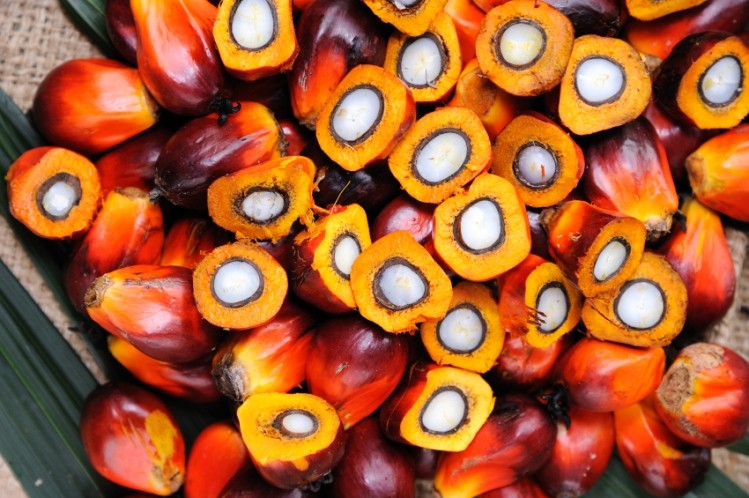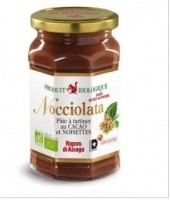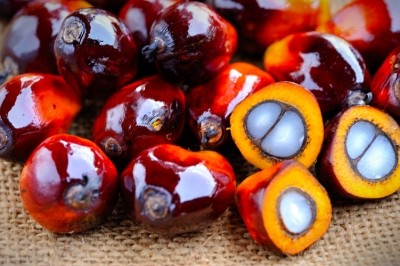A new standard for quality palm oil?
Good palm oil harvesting and processing keeps cancer contaminants to 'insignificant levels', says industry

FoodNavigator spoke to the association as it reacted to a campaign launched by Italian consumer rights group, Altroconsumo, which called on people to stop giving products containing palm oil to children due to levels of carcinogenic contaminants 3‐MCPD and glycidyl esters (GE).
These contaminants are present in all processed and refined oils but a recent EFSA opinion found levels in palm oil can be up to 10 times higher.
Lawyer and president of the Italian Union for Sustainable Palm Oil, Giuseppe Allocca, said: “A petition aimed at eliminating palm oil from products is totally misleading and useless, and certainly not in the interest of consumers.”
Formed in October last year, the Italian Union for Sustainable Palm Oil counts Ferrero, Unilever, Nestlé and Unigrà as member firms as well as trade groups the Italian Association of Confectionery and Pasta Industries (AIDEP) and the Italian Association of Oil Industries (ASSITOL).
How is palm oil processed?
Crude palm oil is a bright orange-red colour. In order to transform it into an oil that can be used by the food industry it undergoes three stages.
First it is degummed - the gum and fatty acid in crude palm oil and crude palm kernel oil are separated and impurities such as trace minerals, copper and iron are removed by using phosphoric acid.
It is then bleached using bentonite calcium to remove colour pigments and other impurities.
Finally it is deodorised to remove the taste and smell by steaming it at high temperatures of between 240°C to 260°C before being cooled to room temperature.
(Source: Wilmar International)
Harvesting and processing makes the difference
According to Allocca, palm oil has the potential to have as low levels of GE and 3-MCPD as other oils as long as certain harvesting conditions are respected.
"Palm oil coming from fruits harvested at the right moment, pressed quickly after harvest and processed at appropriate temperatures presents insignificant, if any, levels of contaminants."
“Levels of contaminants from glycerol close to those - minimum - that are found in other refined vegetable oils such as those of seeds - sunflower, corn, rapeseed, etc. We think that this should be the standard for quality products."
Minister for palm oil and commodities at the Mission of Malaysia to the European Union in Brussels, Dr Kalanithi Nesaretnam, told us that its own internal tests showed levels in Malaysian palm oil were lower.
“The MCPD levels attributed to palm oil [in the Altroconsumo tests] are not reflective of Malaysian palm oil that supplies 40% of world palm oil traded. In fact for infant formula Malaysian palm oil has been measured at 0.3 ppm which is lower than other vegetable oils.”
'There are no 'insignificant' levels'
But can industry really boast about having achieved insignificant levels?
The EFSA opinion set a tolerable daily intake (TDI) of 0.8 micrograms per kilogram of body weight per day for 3-MCPD and its fatty acid esters but could not set a safe level for 2-MCPD due to a lack of toxicological data.

Jochen Wettach, project manager for nutrition, cosmetics and health at German consumer group Stiftung Warentest, which also carried out its own product testing, said: "GE especially is considered to be genotoxic and a probable carcinogen [by the United Nation's International Agency for Research on Cancer], so there are no 'insignificant' levels. The contents must be 'as low as reasonably achievable.'"
Stiftung Warentest took a selection of 20 different chocolate spreads available on the German market and assessed them for a number of factors, such as taste and certified sustainability, as well as the presence of contaminants GE, 3-MCPD, mineral oils and others.
Although the report does not specify actual levels of contaminants (instead categorising them as good, poor etc), it found the highest level of 3-MCPD
was in the premium Nutella-alternative, Nocciolata, made by family-owned Italian company Rigoni di Asiago. As well as being the most expensive chocolate spread, it also happens to be palm oil-free.
Nocciolata, made with a blend of sunflower oil and cocoa butter, performed well for taste but Stiftung Warentest branded it a “test loser” due to the contaminants.
Following the report Rigoni di Asiago told Stiftung Warentest it has since changed the refining conditions for its sunflower oil, achieving considerably lower levels of contamination.
Transparency
Another sticking point for the Italian Union for Sustainable Palm Oil is that Altroconsumo has not specified the testing methods nor the name of the laboratory that carried out the result. It says there is only one laboratory in Italy qualified to analyse these contaminants.
But public affairs officer at Altroconsumo Marialuisa Villa said it has informed manufacturers of the method used and is happy to give the name of the lab to public authorities should they wish to know.
“The fact that we don't make public the name of the laboratories we use for our tests doesn't jeopardise our transparency nor credibility. It is just a precautionary measure in order to avoid any illicit pressure over the labs that normally work also for industry. It happened in the past and we have learned the lesson.
“We choose qualified and certified laboratories which are able to carry on the tests we need following the best methodologies available," she added.
Is palm oil being unfairly singled out? The Italian Union for Sustainable Palm Oil thinks so. “If there was a genuine interest in informing consumers in regards to the presence of contaminants within some product categories, the tests should have been carried out on both products containing palm oil and those that do not," it said in a statement.
“The reason would be to underline the higher risk of one product compared to one other, if this risk really exists. On the contrary, despite the hesitant initial statement that other oils may contain the same contaminants, nothing was done to look into this side of things.”
Altroconusumo said it chose representative products that are popular with children and that EFSA had highlighted the contaminants as being particularly dangerous for infants, children and adolescents. The choice was made “obviously without expecting to cover the entire market”.
'We will continue testing'
Wettach recognised that it is not currently possible to bring levels down to zero, adding: “The minimisation process must continue and we will certainly continue our comparative testings.”
Altroconsumo also intends on continuing its tests in order to help consumers choose the healthiest products available.
According to a report by Europe Economics, commissioned by the Malaysian Palm Oil Council, Italy imported the second largest quantity of palm oil in 2012, at 992,000 tonnes.











